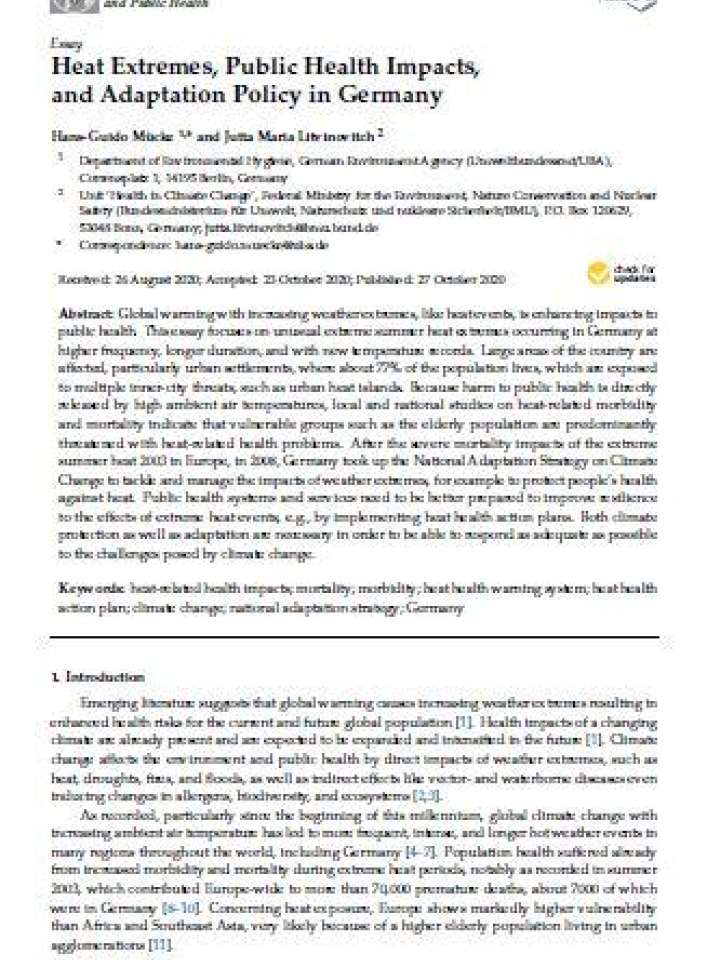Heat extremes, public health impacts, and adaptation policy in Germany
This essay focuses on unusual extreme summer heat extremes occurring in Germany at higher frequency, longer duration, and with new temperature records. Large areas of the country are affected, particularly urban settlements, where about 77% of the population lives, which are exposed to multiple inner-city threats, such as urban heat islands. Because harm to public health is directly released by high ambient air temperatures, local and national studies on heat-related morbidity and mortality indicate that vulnerable groups such as the elderly population are predominantly threatened with heat-related health problems.
The paper concludes that it will be important to follow and learn from the first national study on the effectiveness and efficiency of the 2017 HHAP recommendations, which is going to be conducted between 2019 and 2022. Regional and local agencies must have given authority to evaluate the applicability and efficacy of HHAP operation and proposed intervention measures. In addition, they must be allowed to develop, implement, and evaluate pilot strategies and measures that can fit better for their local communities, and the measures that are found be successful can be integrated in the national HHAP strategy. Public health systems and services need to be better prepared to improve resilience to the effects of extreme heat events.
Explore further
